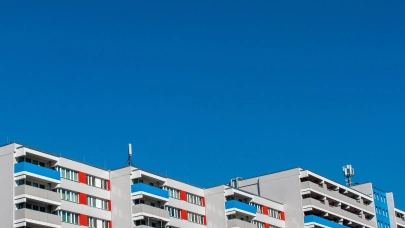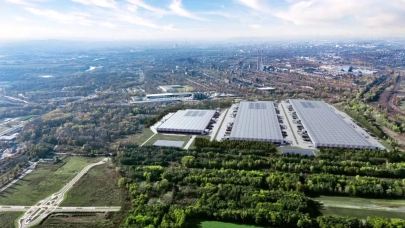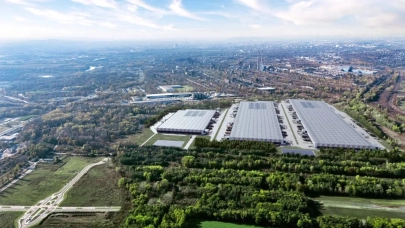
The “2% Safe Mortgage” housing loan subsidy programme introduced by Poland's Law and Justice (PiS) party has caused housing prices in Poland to shoot into space. However, the new government in Warsaw cannot abolish it, as a spike in demand could shake up the entire domestic property development industry.
From the 1st of July to the 23rd of December, banks received a total of 94,100 applications for the "2% Safe Mortgage". During this period, 55,800 agreements were signed. These figures are a clear confirmation of the huge interest in subsidised mortgages, especially consdering that a total of 65,500 units were sold in the record year 2021 for the development industry in Poland.
How does it work?
2022 was a difficult time for the Polish housing industry. As a result of a whole series of interest rate rises, the vast majority of potential buyers who wanted to use a mortgage were eliminated from the market. The government came to their rescue by announcing in early spring 2023 the launch of a special programme of preferential loans with a fixed interest rate of 2%, guaranteed by the state. Buyers basically had to meet only three conditions - to be less than 45 years old, never to have owned any other property before, and the flat to be purchased could not be more expensive than PLN 500,000 (around €114,000) for singles and PLN 600,000 (around €136,000) for couples, with the limits to be raised with a maximum contribution of PLN 200,000. The start of the programme was set for the 1st of July 2023. One did not have to wait long for the effects - individual investors and those who retained their creditworthiness despite the rate rises went shopping first. Both of them rightly assumed that it was necessary to buy as soon as possible because in the summer the market would be cleared of the smallest premises by the beneficiaries of the programme. When the "2% Safe Mortgage" programme was launched in July, residential property prices in the largest Polish cities skyrocketed - depending on the location, the yearly increases ranged from 8% to as much as 24%. The powerful demand stimulus of the programme's launching was not counterbalanced by a corresponding increase in supply - as a result, the residential offer dropped to levels not seen since 2010 (e.g. in Warsaw and Kraków, it shrank by over 50%).
A success difficult to predict
Such a great success of the programme - and its disastrous effects on price levels - definitely took its authors by surprise. They assumed that a maximum of 10,000 loan agreements would be signed in the first year of the programme. So disbelieving was the success that, in 2023, there were no limits on the number of agreements that could be signed under the "2% Safe Mortgage". Instead, a limit was introduced on the amount of money in the budget - PLN 16 billion - that could be used for the “2%” in 2023-24. These funds are already depleted. On the 2nd of January, The Bank Gospodarstwa Krajowego, which handles the reservation of subsidy funding, has issued an announcement that banks have stopped accepting applications for the loan.
What will happen after that date - no one knows. The new government, having received an unwanted gift from the previous team in the form of the "2% Safe Mortgage", faces quite a dilemma. The simplest solution - simply adding more money to the pool of subsidised loans - would most likely result in further rapid increases in the price of flats, which are already beginning to be beyond the reach of the average Pole. In Warsaw, a family with a child who would like to buy a medium-sized 3-bedroom apartment must have at least PLN 1 million (around €230,000). With the housing gap estimated at 1.2 million flats in Poland, the public's expectations are that the new government will continue to maintain some form of assistance for buyers whose situation is deteriorating from quarter to quarter. In order to satisfy them, new low-cost credit programmes have to be introduced. As a result of these, prices rise even further and the young person becomes even more unable to afford a flat. It is a vicious circle. One solution could be to gradually extinguish the demand for preferential loans by making them less attractive (e.g. "4% Safe Mortgage" and so on), but this in turn would be politically disadvantageous, as it would generate automatic comparisons with the more generous proposals of the previous ruling team.
Extinction of the programme is a big problem for developers
The most radical solution - complete suspension of any aid for borrowers - could, in turn, shake up the property development industry. A drastic drop in demand for flats at the current prices would mean one or two years of problems for developers, who probably will not nominally lower prices, but will have to cut down on margins to sell anything. For many smaller operators, this would mean bankruptcy. In the long term, however, we could expect price cuts and a balancing of supply and demand, which is always the healthiest situation for the market.
We can be sure of one thing - the 0% interest mortgage programme announced by the new ruling party during the election campaign turned out to be just a promise without a cover. Further, even more generous support for borrowers without an increase in the supply of housing - for example as a result of liberalisation of legislation or the sale of state-owned land to developers - would have a similar effect on the housing market as pouring a bucket of petrol on a burning bonfire.
For now, we only know that the Ministry of Development and Technology is working intensively on a new borrower support formula. Its aim is that “the new instrument should, on the one hand, be more attractive to people with lower incomes and larger families and, on the other hand, reduce its abuse by people whose high earnings allow them to obtain a loan in the usual market offer”. An important assumption is also that there will be less pressure on the housing market and the associated impact on price increases, as well as precisely targeted state aid. The new support solution is to be presented “in early 2024, as soon as the design work is completed”.



